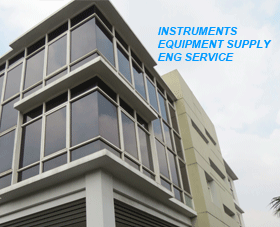
|
|
Principal Products
- AIRTEK
- CENTEC
- DITECO
- DOSCH
- H E - TITAN
- HOFFER Turbine Flowmeter
- IGS
- INOXCVA
- MASTER MAG
- PHE- GEA
- SAIMO
- SODERN
- SYSCO
- TECTRON
- Thermofisher Scientific

MOLA
Rugged & Non-Intrusive
The Thermo Scientific MOLA Model 7200a is a moisture on-line analyzer that accurately and reliably measures the concentration of hydrogenous material in a process vessel. Designed for harsh industrial applications, the rugged density gauge uses patented neutron backscatter, pulse mode, ion chamber technology to non-intrusively measure the moisture content in metallurgical grade coke and/or iron ore pellets.
Improves Operations
Optimizing blast furnace performance is the key to improving operations and increasing profitability. The MOLA is engineered to help steel mills effectively manage the most pressing process issues, including variability in coke size, differing amounts of surface moisture, harsh environmental conditions at the point of measurement and high coke volume.
Stable & Repeatable
Pulse mode technology allows for excellent stability and repeatability over a wide temperature range without the need for high voltages or temperature stabilization of the circuitry. The signal from the detector is sent to a 1400A 'M' transmitter where the calculations and density compensation (external input from density gauge) are performed. The output from the transmitter is a 4 to 20 mA signal that can be set in many different units of measurement to facilitate international usage.
Easy-to-Install & Service
Like all Thermo Scientific nuclear gauges, the MOLA is easy-to-install and service. With no component exceeding 45 pounds, installation is greatly simplified. The streamlined design also allows for rapid diagnostics and servicing of the unit.
Technology
The MOLA moisture head consists of a radioisotope neutron source with appropriate shielding and an ion chamber neutron detector. The radioisotope source emits high-energy (fast) neutrons which pass through the wall of the hopper into the process material. As the fast neutrons enter the process material, they are scattered by repeated collisions with the other types of nuclei in the process material, including the hydrogen in the moisture. The scattering reflects many of the neutrons back through the hopper wall back to the MOLA.
The measurement of moisture is made possible by the fact that while the fast neutrons lose little energy in collisions with carbon, oxygen and the other nuclei in the process material, they experience a great loss of energy in collisions with hydrogen nuclei which converts them to low-energy (thermal neutrons). The number of thermal neutrons produced is proportional to the density of hydrogen in the process material.
The ion chamber detector in the MOLA produces a current output for every thermal neutron that strikes it, generating a signal that is directly proportional to the hydrogen density of the process material. If all the hydrogen in the process material is contained in the moisture, or if there is a constant amount of hydrogen contained in other forms, the current rate from the ion chamber detector can be calibrated in terms of weight of moisture per unit volume of the process material. The current rate of the ion chamber detector can be calibrated in terms of the percent-by-weight moisture in the process material if the bulk density of the process material is reasonably constant or if the optional bulk density compensation is provided.
Thermo Fisher Scientific | Diteco | Dosch | Hoffer | Airtek Saimo | Tectron
Master Mag | Igs | Titan | Gea Phe | Inox | Centec | Sodern
